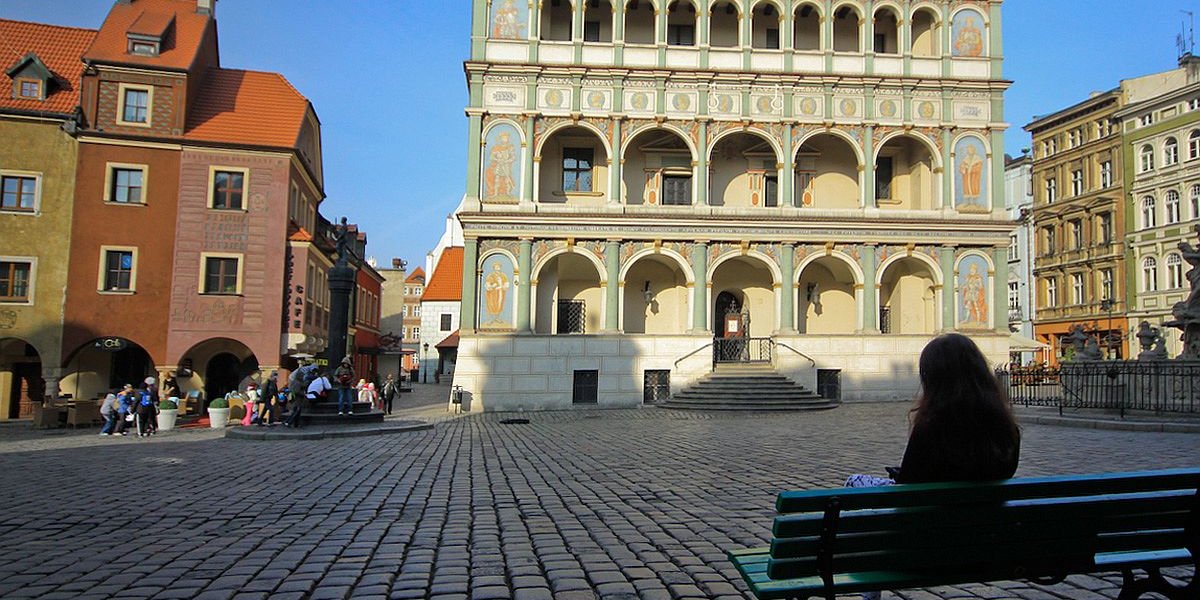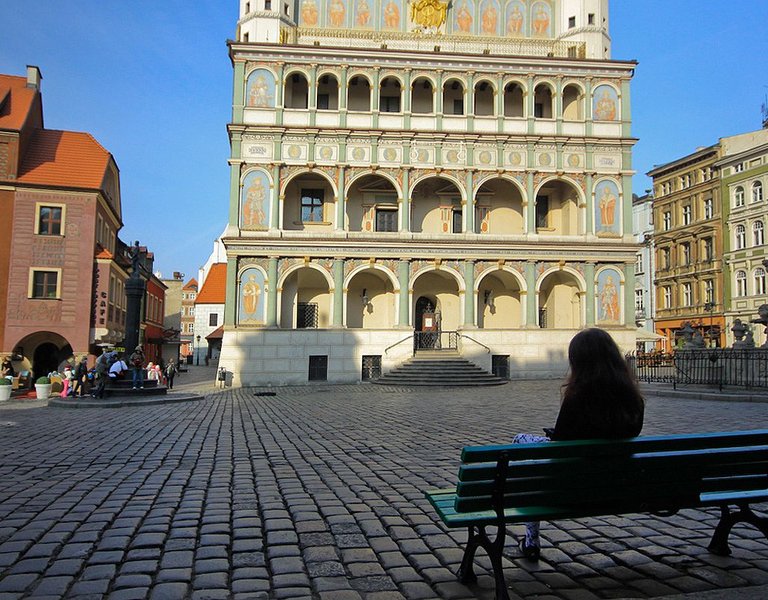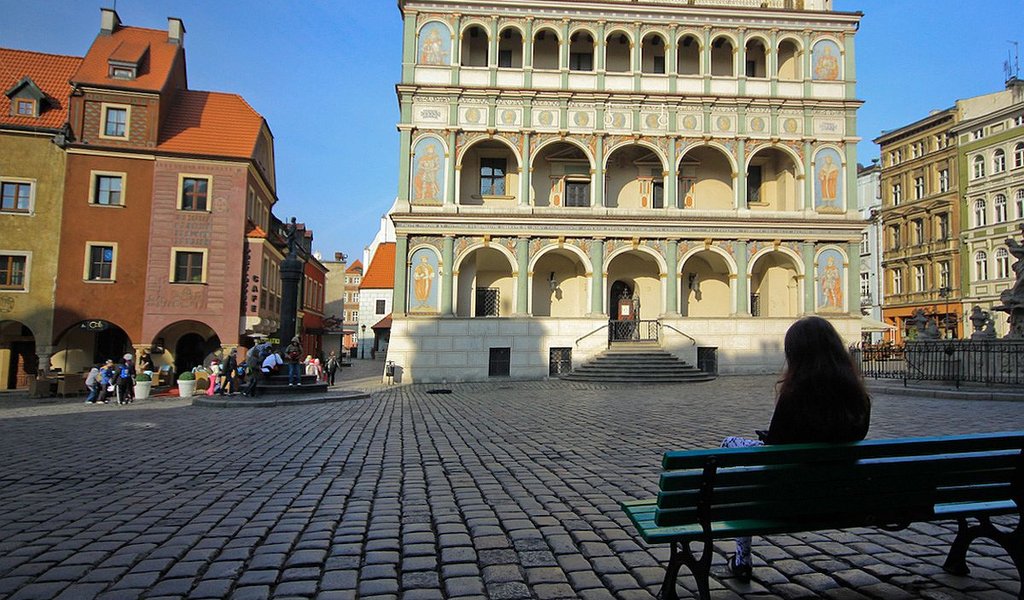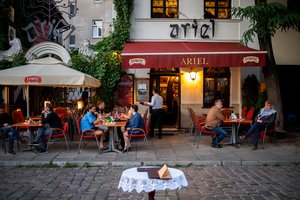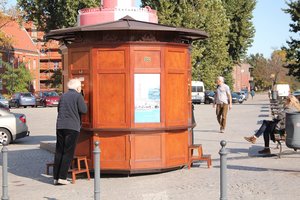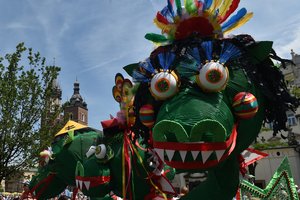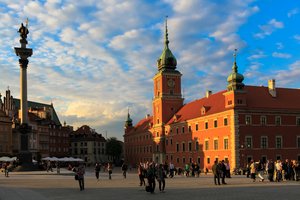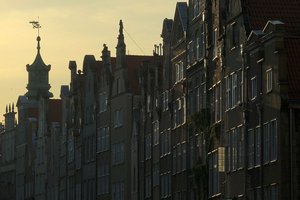Poznan women's route. A walk guide (Walking time: less than an hour)
It has been a century since Polish women won the right to vote. To mark this occasion, we encourage you to visit Polish cities and follow in the footsteps of Polish suffragettes and social activists. This time we invite you to visit Poznan, the capital of Wielkopolska (Greater Poland) region. In the 19th century this city was marginalized by the Prussian authorities, but its inhabitants strove to maintain its position. Polish women, who combined the fight for women’s rights with the fight for the national cause, played a major role in this struggle.
Historical background
In the 19th century, Poznan belonged to the Prussian State. From Berlin’s perspective, it was a provincial stronghold, Festung Posen, of little importance even in comparison with the neighbouring Breslau (Wroclaw). Until 1919, the city had no university, and the only culture it offered was low-level entertainment. The city’s deprived reality did not match the dreams of Polish men and women, who wanted Wielkopolska’s capital to maintain its cultural, scientific and political significance. They could not count on the city’s institutions, so it was up to them to be the driving force behind its cultural life and growth. They graduated from universities in Berlin, Lausanne and Lvov, and sometimes came back to Poznan in pursuit of romantic and later positivist ideas, which led them to set up the Society of Friends of Science or to build the Bazar. They professed Catholicism instead of Prussian Protestantism and Evangelism, and along with positivist grassroots activities, they embraced national patriotism, whose embodiment was Roman Dmowski, later one of the founders of Polish independence. In no other annexed territory of partitioned Poland was emancipation so closely linked to and so much affected by the national cause as in Poznan. Women could enrol at the Poznan University as soon as it was established, one year after Poland regained independence. Female students organized women’s associations, wrote doctoral theses, joined academic staff on a par with men. Women were co-creating the city’s political, cultural, and artistic life, ran charities, boarding schools and literary salons, and published newspapers.
1. OLD MARKET SQUARE. TOWN HALL
You can start your walk at noon, when the famous Poznan bucks from the town hall tower ram their horns. In a tenement which once stood there lived Julia Woykowska, a poet and a writer, who dedicated herself to modern education of girls and the emancipation of all social strata. Together with her husband, Antoni Woykowski, she edited the renowned Tygodnik Literacki, a democratic cultural and art magazine, which published radical political and ideological texts. She held a literary salon, reportedly smoked cigars and sat cross-legged in social situations. In some circles she was even seen kissing her husband in public! She was not afraid of engaging in polemical debate with male activists in her writings. She fought against the allegations of Prussian censorship, which received letters from “well-wishers,” denouncing that it was not her husband, but in fact her, who ran the magazine, a practice that was illegal at the time. Woykowska did not create her own emancipation school. For years she was a laughingstock and “a bad example.” Unfortunately, no portrait of Woykowska or the tenement where she lived survived.
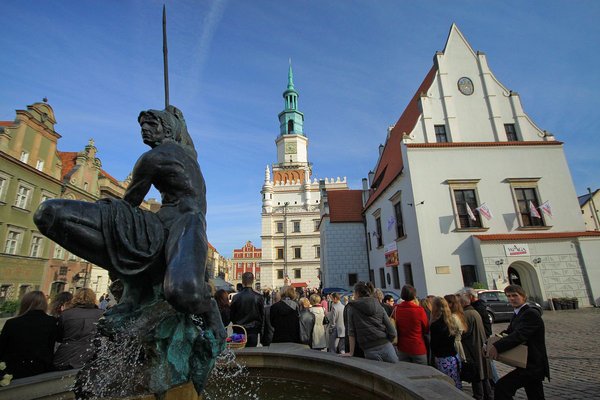
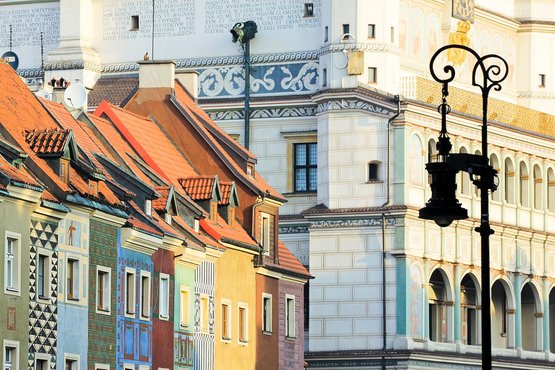 2. WIOSNY LUDÓW (SPRINGTIME OF THE PEOPLES) SQUARE
2. WIOSNY LUDÓW (SPRINGTIME OF THE PEOPLES) SQUARE
A lawn at the top of a hill was once surrounded by close-knit tenement houses. One of them hosted the Society of Friends of Mutual Instruction and Care for Children “Warta.” The society brought together only women, and, surprisingly, had no male patron. The organization’s statute envisaged mutual exchange of knowledge about child-care and provision of care for children in need. In reality, the society’s main goal was to run a clandestine Polish school which taught Polish language, literature and history. The society also ran a shelter, fed children, and organized after-school activities and trips. It also enabled its members to exchange expertise. They met on a regular basis at the Women’s Reading Room to discuss the society’s actions and listen to lectures. On the initiative of “Warta,” on 18 March 1899, the first rally of Wielkopolska women was held! Among the movement’s activists were sisters Aniela and Zofia Tułodziecki. Aniela wrote letters and organized exchanges with suffragettes from across the country, and Zofia, who ran a dressmaking studio and a fashion salon, founded Poznan’s first professional organization for women in 1903. The organization helped women find jobs, offered legal counselling, ran vocational courses, a library, a bank, and a shelter for elderly women.
3. 11, ŚW. MARCIN STREET (ST. MARTIN)
One of the streets crossing the Wiosny Ludów Square is St. Martin Street. Going up the street, we reach house number 11, built in 1870 and dubbed “doctors’ tenement.” In the 19th century, the building’s first floor hosted Maria Wicherkiewiczowa’s first salon, which was an obligation of all women belonging to Poznan’s elites. Wicherkiewiczowa, however, went further than this and became an amateur historian of Poznan, despite critics accusing her of lack of education and professionalism. Today, Wicherkiewiczowa is known primarily as the author of the monograph “Rynek poznański i jego patrycjat” (Poznan square and its patriciate). Her works, which were based on materials from the City Archives burned during World War II, are a valuable source for contemporary researchers of the city’s history.
4. THE PHARMACY MUSEUM
At the junction of św. Marcin Street and Marcinkowskiego Avenue, we turn right and head towards the Freedom Square. Tenement number 12 stands between the National Bank of Poland and the historic Bazar. After passing through the gate, we will see the historic “Spanish” stairs dating back to the beginning of the 20th century, with the Pharmacy Museum next door. The museum brings to mind Filipina Studzińska, a Sister of Charity who moved to Krakow from Poznan around 1824 with her sister Konstancja. They scored a success on a European scale: they were among the first women to graduate from the faculty of pharmacy! The two sisters worked together in St. Lazarus Hospital in Krakow for ten years. After receiving their diplomas, they went their separate ways: Konstancja moved to Warsaw, and Filipina settled in Poznan, where in 1844–1848 she was Mother Superior of the House and Hospital of Transfiguration at 1/2 Długa Street.
5. 23, 27 GRUDNIA STREET
In the late 1830s, 27 Grudnia Street was called Berlinerstraße (Berlin Street). It was a representative avenue, alongside which elegant tenement houses were erected for wealthy dwellers. Nearby stood a white, classical building of the Polish Theatre, built thanks to contributions by Poles living in all the partitioned Polish lands. The theatre hid behind these beautiful buildings, among them tenement house number 23. It was the house where in 1842 siblings Jędrzej and Bibianna Moraczewski lived. Bibianna founded one of Wielkopolska’s leading literary and artistic salons. She belonged to the Enthusiasts, who were involved in clandestine activities. A famous anecdote recalls Bibianna Moraczewski transporting underground writings to Warsaw in her underwear beneath big dresses. Moraczewska wrote novels of manners, historical tales and schoolbooks for peasants and children. With no family of her own, she was an organizer and social activist until the very last days of her life.
Poland.pl
Source: "Szlaki kobiet. Przewodniczka po Polsce emancypantek", Fundacja Przestrzeń Kobiet, Krakow 2015.
Special thanks are due to the Fundacja Przestrzeń Kobiet (Women’s Space Foundation).
15.07.2019
